
"Air Pollution in Jakarta, Learning from London's Bad Experience"
Thousands of people died in the Great Smog of 1952 in London.

Thousands of people died in the Great Smog of 1952 in London.
Dream - Donald Acheson already knew the city of London like the back of his hand. However, when working a shift at a busy hospital in downtown London in December 1952, his routine task turned into a confusing and dangerous disaster. The unpleasant smog had engulfed the city, covering it with a thick layer of black air. Lost on familiar streets, the young doctor had to "crawl along the sidewalk next to the building walls, to the next corner, in order to read the street name."
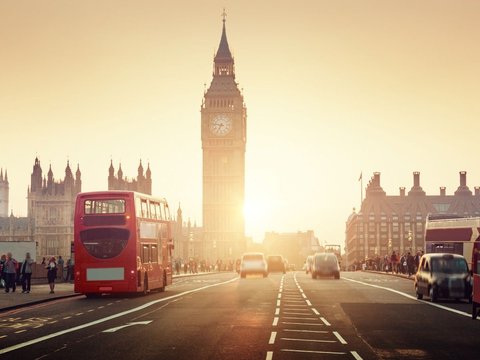
The following is the translation of the 'Bahasa' text to 'English' while preserving any html tags: "The smoky haze was inside the hospital where Acheson worked — and inside the lungs of patients in his emergency room. Shortly after, the hospital reached its peak: the morgue was filled with patients who had died due to respiratory and heart problems."
The terrifying and suffocating fog is called: Great Smog or Great Smog. Between December 5 and 9, 1952, an environmental disaster struck London. This will have an impact on health and the climate of England in the years to come. London has long struggled to overcome its air quality, starting from the "Great Stink" that emerged in the polluted waters of the River Thames in the 1850s to the epic "pea soup" in this city - a long period when emissions from factories and heating stoves were trapping fog and not dominating air pollution.
In 1905, doctor Harold Antoine des Voeux coined the term "smog", which combines "smoke" and "fog", to describe the air situation in London. At that time, England was a giant in coal production. This industry reached its peak in 1913, when the country produced a quarter of the world's total coal, which was a staggering amount of 292 million tons.
As explained by historian Lynda Nead, the idea of an open coal fire in the home has "almost folkloric associations", especially during and after the chaos of World War II, which led to a significant housing shortage in England.
The dense population of London sees fireplaces and houses as more important than ever after the war. One survey found that 78 percent of the British people use coal in their homes.
The Great Smog of London, or the Great Smog of 1952, was a severe air pollution event that struck London, England, in December 1952. An extraordinary period of cold weather, combined with an anticyclone and windless conditions, accumulated pollutants in the air—mostly from coal usage—to form a thick layer of smog over the city. It lasted from Friday, December 5th, until Tuesday, December 9th, 1952, and then dissipated rapidly when the weather changed. The smog caused major disruptions by reducing visibility and even penetrating indoor areas, far worse than previous smog events, known as "pea-soupers".
The government's medical report in the weeks following the incident estimated that up to 4,000 people had died directly from the haze and another 100,000 had fallen ill due to the respiratory effects of the haze.
The following is the translation of the provided 'Bahasa' text to 'English' while preserving any HTML tags: "Newer research shows that the number of deaths at that time may have been much higher, with estimates ranging between 10,000 and 12,000 deaths. London has been suffering since the 13th century due to poor air quality. However, the Great Smog of 1952 was many times worse than anything this city had ever experienced before."
It is considered the worst air pollution event in the history of Great Britain, and its most significant influence on environmental research, government regulations, and public awareness of the relationship between air quality and health. This has led to several changes in practices and regulations, including the Clean Air Act of 1956. The unusually cold weather period before and during the Great Smog caused London residents to burn more coal than usual to stay warm.
While hard coal with better quality (such as anthracite) tends to be exported to pay off World War II debts, post-war domestic coal tends to be of relatively low sulfur content varieties called "nutty slack" similar to lignite which increases the amount of sulfur dioxide in the smoke.
There are also many coal-fired power plants in the Greater London area, including Fulham, Battersea, Bankside, Greenwich, and Kingston upon Thames, all of which contribute to air pollution. According to the UK Met Office, the following pollutants were emitted daily during the December 1952 smog episode: 1,000 tons of smoke particles, 140 tons of hydrochloric acid, 14 tons of fluorine compounds, and 370 tons of sulfur dioxide, which may have been converted to 800 tons of sulfuric acid.
On December 4, 1952, an anticyclone settled in London that was windless, causing a temperature inversion with relatively cold and stagnant air trapped beneath a layer of warmer air. The resulting fog, mixed with smoke from household and industrial chimneys, particulates like vehicle exhaust, and other pollutants such as sulfur dioxide, formed a continuous smog that enveloped the capital the next day.
The presence of soot particles gives a yellowish-black color to the smog, hence it is called "pea-souper". The absence of significant wind hampers its dispersion and allows the accumulation of pollutants that have never occurred before. Although the event is now widely referred to as the "London smog", air pollution, in reality, extends far beyond the capital. According to E.T. Wilkins (from the Department of Scientific and Industrial Research, whose measurements will clarify the relationship between smoke, sulfur dioxide, and increased mortality), the smog covered "many parts of the British Isles", while "In London and the Thames Valley, smog or fog covered an area of 1,000 square miles". However, the greatest impact of the smog occurred in London.
There is no panic, because London is famous for its fog. However, this one is denser and longer-lasting compared to the previous "pea-souper". Visibility is reduced to a few meters, with one visitor stating that "You feel blind", making driving difficult or sometimes impossible. Public transportation stops, except for the London Underground, and ambulance services stop, forcing individuals to make their way to the hospital on foot.
The text in English with preserved HTML tags: "The thick haze has even penetrated into the room, resulting in the cancellation or abandonment of concerts and film screenings, as the visibility decreases in large enclosed spaces, making it more difficult to see the stage and screen from the seats. Outdoor sporting events are also cancelled. In the inner suburbs of London, far from the city center, there is no effort to reduce the thick fog on the back roads. As a result, visibility can drop to one meter or more during the day."
Walking out of the house becomes a dragging problem to experience potential obstacles like sidewalks. It gets worse at night because every street lamp is equipped with incandescent bulbs, which do not provide penetrating light to the sidewalk so pedestrians can see their feet or even lamp posts. "Smoke fog masks" are worn by those who can afford them after purchasing them from the pharmacy. The 1953 report made by the British Government's Air Pollution Committee contains this graph showing "a clear correlation between smoke pollution and sulfur dioxide, and the daily death rate in London" during the Great London Smog in December 1952.
In the following weeks, statistics collected by medical services found that the fog had killed 4,000 people. Many of the victims were still very young or elderly, or already had respiratory or cardiovascular problems. In February 1953, Marcus Lipton stated in the House of Commons that the fog had caused 6,000 deaths and over 25,000 people had claimed to be sick in London during that period. The death toll continued to rise for months after the fog. An early report, which was never completed, blamed the deaths on an influenza epidemic. Emerging evidence suggests that only a small fraction of the deaths were caused by influenza.
E. T. Wilkins, who, as the Responsible Officer for Atmospheric Pollution at the government-owned Department of Scientific Research and Industry at that time, was a leading pollution expert in England at that time, created a graph showing the increase in death rates from December 1952 to March 1953 and found that there were an additional 8,000 deaths beyond the previously calculated number, bringing the total to 12,000 deaths.
Most deaths are caused by respiratory tract infections, hypoxia, and mechanical obstruction of the airways by pus resulting from lung infections due to smog. Lung infections are mainly bronchopneumonia or acute purulent bronchitis overlaid on chronic bronchitis. Research published in 2004 showed that the number of deaths was around 12,000, about three to four times higher than the government's official number at that time, but very close to the initial estimate by Wilkins. In the long term, individuals who were still in the womb or infants at the time of the smog have lower intelligence and worse respiratory health compared to their counterparts in other parts of the world.
When the residents of London lit their fireplaces to combat the cold winter of December 1952, a weather pattern emerged that would transform the smoke from their coal into deadly fog. On the afternoon of December 5th, with a temperature of around 32 degrees, the heat and smoke from the coal fires rose into the atmosphere as usual. In typical winter days, they would rise and cool in the cold air before dissipating.
On the contrary, the opposite happens thanks to a high-pressure weather system known as an anticyclone. A blanket of warm and humid air stops above London, pushing the air towards the ground. There, the cold temperature condenses the water vapor in the air into fog. Known as temperature inversion, this weather phenomenon traps the emissions from fires above the city. According to the UK Meteorological Office, the fog is 200 meters thick, and as each cold day passes, the city's pollutants release up to one thousand tons of smoke and 2,000 tons of carbon dioxide per day. Meanwhile, sulfur dioxide, a colorless gas produced when coal is burned, gets trapped in the atmosphere. There, it combines with fog water particles and becomes sulfuric acid, enveloping the city in fog that is essentially acid rain.
Chaos ensues as the fog darkens. With visibility approaching zero, drivers cannot safely traverse the highway and the city shuts down its public transportation system. People on the city sidewalks cannot even see their own feet. As the weekend progresses, so does the health impact of the smog. Inpatient care increases by 48 percent that week, and respiratory hospital admissions more than double. The stagnant smoke chokes the city.
The Conservative government was slow to respond to the Great Smog, and public health authorities underestimated the effects of the polluted air. Prime Minister Winston Churchill never openly commented on the event or its consequences. But the December smog was unlike anything London had ever seen. By the time the fog cleared four days later, deaths had already begun. Even though flower shops quickly ran out of flowers and funeral homes ran out of coffins. That week, the government reported 3,000 deaths - but the reality was much more horrifying. In 2012, researchers analyzed historical sources to determine the actual number of deaths from the Great Smog - finding that it caused around 12,000 more deaths than should have occurred.
And its effects last much longer than the haze itself. Children who are exposed to haze during their first year of life are almost 20 percent more likely to suffer from asthma during childhood and 9.5 percent more likely to develop it as adults; exposure in the womb means an almost 8 percent increase in childhood asthma.
The Great Smog effect continues in other forms — namely environmental regulations. Although most of the British population has been satisfied with coal smoke for several decades, public opinion is starting to change. After struggling initially, the British government finally declared clean air as a legislative priority. Everyone should now know that air pollution is harmful to the environment and to those who breathe it. However, what many people are not always aware of is how air pollution spreads beyond the lungs throughout our entire body and why it can seriously affect people.
Great Smog prompted members of the British Parliament to pass the world's first comprehensive national air pollution legislation in 1956. The Clean Air Act prohibits the emission of "smoke nuisance" or "black smoke" and requires new furnaces to emit little or no smoke. In 1968, Parliament members further strengthened the law. Other countries around the world would take years to do something similar; the United States enacted the Clean Air Act in 1970, a full 14 years after the Great Smog.
Political scientist Howard A. Scarrow explained that national smoke emissions decreased by 38 percent in the decade between 1956 and 1966, with coal-generated smoke concentration decreasing by 76 percent in London alone. Thanks to important air pollution laws, the city has not experienced a "pea-soup" since the 1960s.
Air pollution in London has decreased since Sadiq Khan became the Mayor of London, with a 94% reduction in the number of people living in areas with illegal levels of nitrogen dioxide. The number of schools in the area has also decreased by 97%, from 455 in 2016 to 14 in 2019. Experts describe this reduction as dramatic and indicate that the air pollution crisis cannot be solved. More than 9,000 people in the capital city died each year due to dirty air in 2015.
Report from the Mayor of London, reviewed by scientists, shows that over 2 million people in the capital lived with polluted air in 2016, but it decreased to 119,000 in 2019. The report, which does not include further decrease in pollution observed after the Covid-19 lockdown, indicates that levels of nitrogen dioxide (NO2) on the city's roads decreased by 44% between early 2017 and early 2020. Pollution reduction was achieved through vehicle tax charges that prevented dirty vehicles from entering the city center and encouraged the use of cleaner vehicles. Placing low-emission buses on the most polluted routes, ending permits for new diesel taxis, and expanding the number of protected cycling spaces also contributed.
However, Khan said the journey is still long, especially because 99% of London's territory has particle pollution levels above the recommended limit set by the World Health Organization or WHO, which is much stricter than the limit in the UK. Almost a quarter of the roads in central London - between the north and south circular roads - still exceed the legal limit for (NO2), which is mostly produced by diesel fuel. However, the Ultra Low Emission Zone (Ulez), which charges vehicles that cause pollution, will be expanded to cover the entire London area from October 2021.
Air pollution is the biggest environmental health risk, according to the WHO, and it can damage every organ in the body. There is also emerging evidence that dirty air worsens the infection and death rates from the corona virus, and that people from minority ethnic communities are experiencing the worst effects. These people are more likely to live in areas with high air pollution.
"Today's report confirms the transformative impact of my policies on our toxic air crisis," said Khan, who was elected Mayor of London in May 2016. "I am pleased that Londoners are breathing cleaner air and we are saving billions of pounds for the NHS healthcare fund." "However, air pollution remains a major public health challenge and it is time for the government to step up. We cannot sleepwalk... over the significant impact of toxic air on everyone's health."
"He said that stricter WHO limits should be included in the upcoming environmental bill as legally binding targets for 2030. Boris Johnson was the Mayor of London from 2008 to 2016, and a study by King's College London found that it took 193 years to achieve legal compliance with NO2 levels during that time. Khan said that the city is now on track to meet legal levels everywhere by 2025."
"Dream.co.id"
"Dream.co.id"
Prof. Stephen Holgate, the air quality advisor at the Royal College of Physicians, said, "Air pollution is a specter for society, especially detrimental to the younger and older generations. What Mayor London has shown in his first term is that significant reductions in toxic pollutants can be achieved and that the business world and society are willing to make the necessary changes to achieve this." He said that reducing pollution would bring great benefits to the people of London. The report shows that there are over 44,000 fewer dirty vehicles driven in the center of London every day compared to 2017, when pollution taxes for vehicles were already established.
In other words, London is serious about continuing to change and improve. Although it is not perfect yet, the Great Smog of 1952 made the British public and London aware: air pollution can kill thousands of people! Therefore, all cities must immediately improve, before it is too late. (eha)
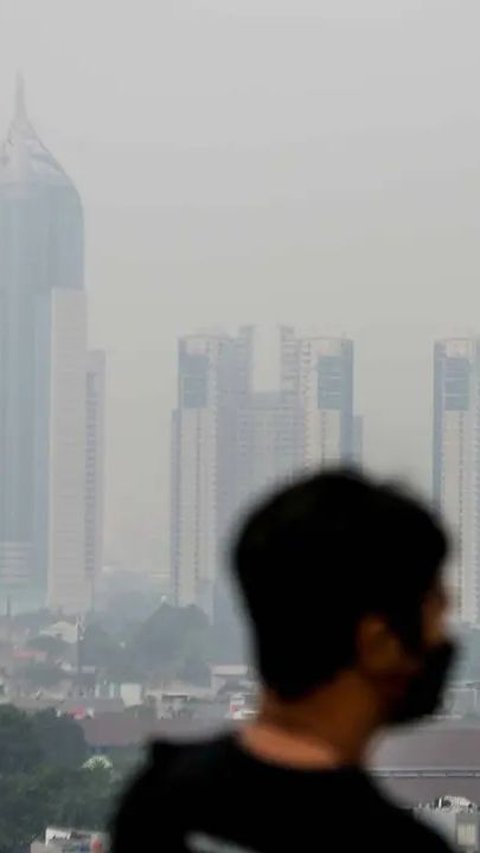
The story of Ella Kissi-Debrah who died because of air pollution
Read More
Prayers for a pious child can help the little one grow into a person with good character and obedience to Allah and parents.
Read More
The prayer of prostration for forgetfulness is an important reading for Muslims to know because it concerns the perfection of prayer.
Read More
The mentioned part is estimated to be located at the western end of the wall in Shanxi province, which has been built since 2,000 years ago.
Read More
In the reading of Surah Al-Kafirun, Prophet Muhammad (pbuh) stated that he will not worship any god except Allah SWT.
Read More
Ganjar Pranowo appears in a private television azan broadcast, Deputy Chairman of MUI gives a positive response.
Read More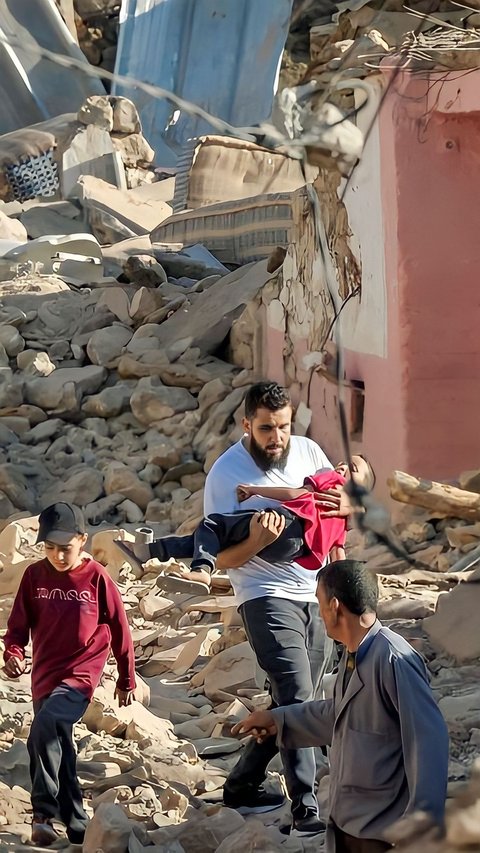
His gaze is empty after losing his wife and four children in the Morocco earthquake on Friday, September 7, 2023, local time.
Read More
This ancient city was discovered after scientists used aerial lasers.
Read More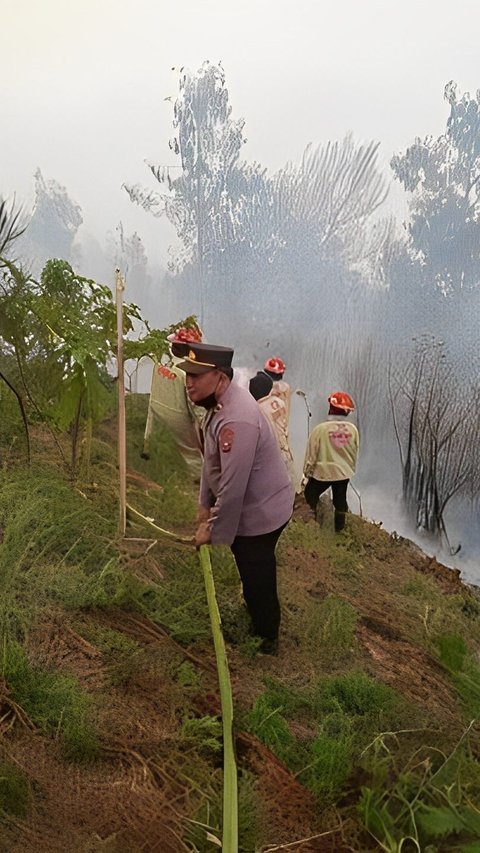
The fire has spread to the Blok Watu Gede forest located in Ngadas Village, Poncokusumo, Malang Regency.
Read More
Words of Muslimah are a source of reflection and self-introspection.
Read More
Although rare, the risk of accidents from flying planes falls into the fatal category.
Read More
Dreaming of someone's death certainly scares us.
Read More
In fiqh, zakat only focuses on the obligation to include intention when performing it.
Read More
The portrait of Prabowo Subianto's house looks magnificent and spacious, the design of the house resembles a palace.
Read More
Morocco was hit by a strong earthquake last Saturday that killed more than 2,000 people.
Read More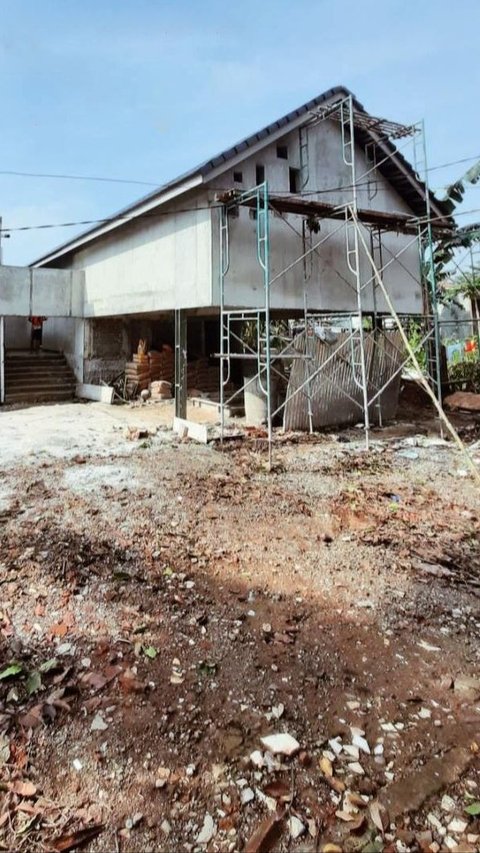
Built on a 420 square meter land, this house that is said to resemble a swift's nest initially often confuses the residents of the housing complex.
Read More
The prostration prayer is performed when prostrating due to hearing or reading the verse of prostration.
Read More